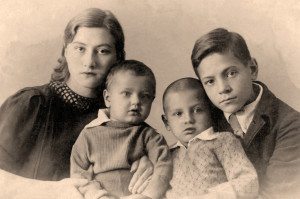Uncovering Genealogical Records for Deceased Children

Uncovering genealogical records for young children that died can be a difficult part of the genealogical process. During earlier time periods – including as recently as within the last century – infant and child mortality rates were much higher than today. In part, that’s why many families had so many children; it was not uncommon for a family with six children to only see two or three thrive enough to reach adulthood. Common childhood illnesses, more serious infections and communicable diseases, accidents, birth injuries, and more drove up the rates of childhood deaths. What information can a genealogist expect to find in the case of a family member who passed away early in his or her life?
Understanding the range of scenarios
One of the first things that is important to understand is the wide range of scenarios that could have occurred. Different scenarios would likely have impacted families in unique ways, and also be reflected differently in the genealogical records. A child that was stillborn or died within moments of birth would have left minimal records, and in some case, no records. An infant that passed within his or her first few months of life was potentially baptized, depending upon the era.
Others may have died later in childhood, but left more information about his or her short life. What’s important for the modern researcher to remember is that if you’re finding information about many children dying in a family, what you’re discovering is a tragic but not uncommon occurrence from certain historical periods. From there, you can move forward to determine what happened and develop theories on how it may have impacted the rest of the family’s story.
Beginning with family and traditional records
The best source of finding information about young children that died is following the traditional research path. Birth and death records can be particularly helpful. One important fact of note: if a baby died shortly after his or her birth, the child may not have been given a first name. As such, they may be listed in records as “Child Smith” “Baby Smith” “Daughter Smith” and so forth. If a family experienced the misfortune of losing multiple children, you may find reference to that in the way individuals are referred to by number, such as “Baby Smith 2 – deceased.” Census records can also be helpful, particularly during periods where mothers were asked how many children they had total as well as how many were still living.
Family bibles, when they exists, also often record information regarding the birth and death of a young child. Other records that may prove fruitful include church records, such as baptismal notices and the local equivalent of parish rosters where the minister or priest may have taken note of births, deaths, and other details of changes in the congregation. Finally, it’s sometimes possible to find information about a child that has passed away by beginning with their final resting place. Permits for burial and the sexton’s or overseer’s records for family and church cemeteries may contain information on children that are buried – either on their own or in the plot of a family member, as was sometimes common.
Learning about the realities of child mortality in your own family can be heartbreaking. But it’s part of piecing together the story of the generations that came before you. Finding documentation of these young lives isn’t always easy. If you’re running into challenges, consider hiring a professional genealogist to help with uncovering genealogical records. Price & Associates is an experienced team of genealogists ready to help you reveal your family tree.
